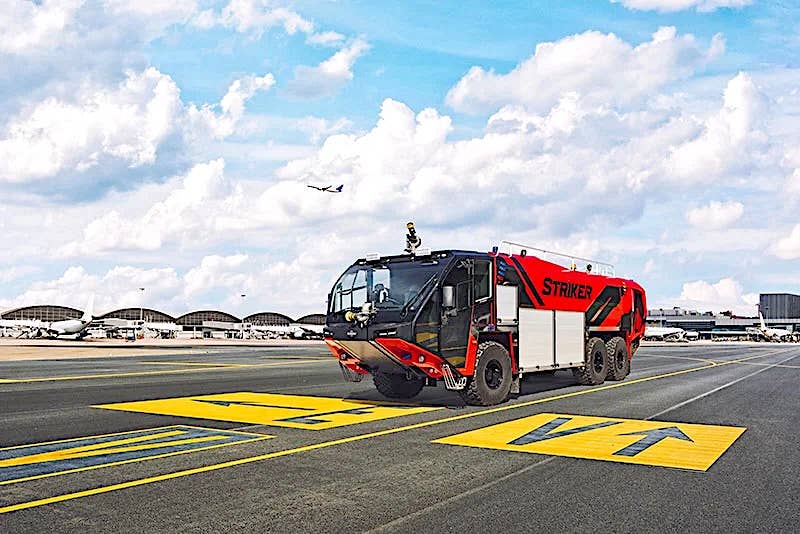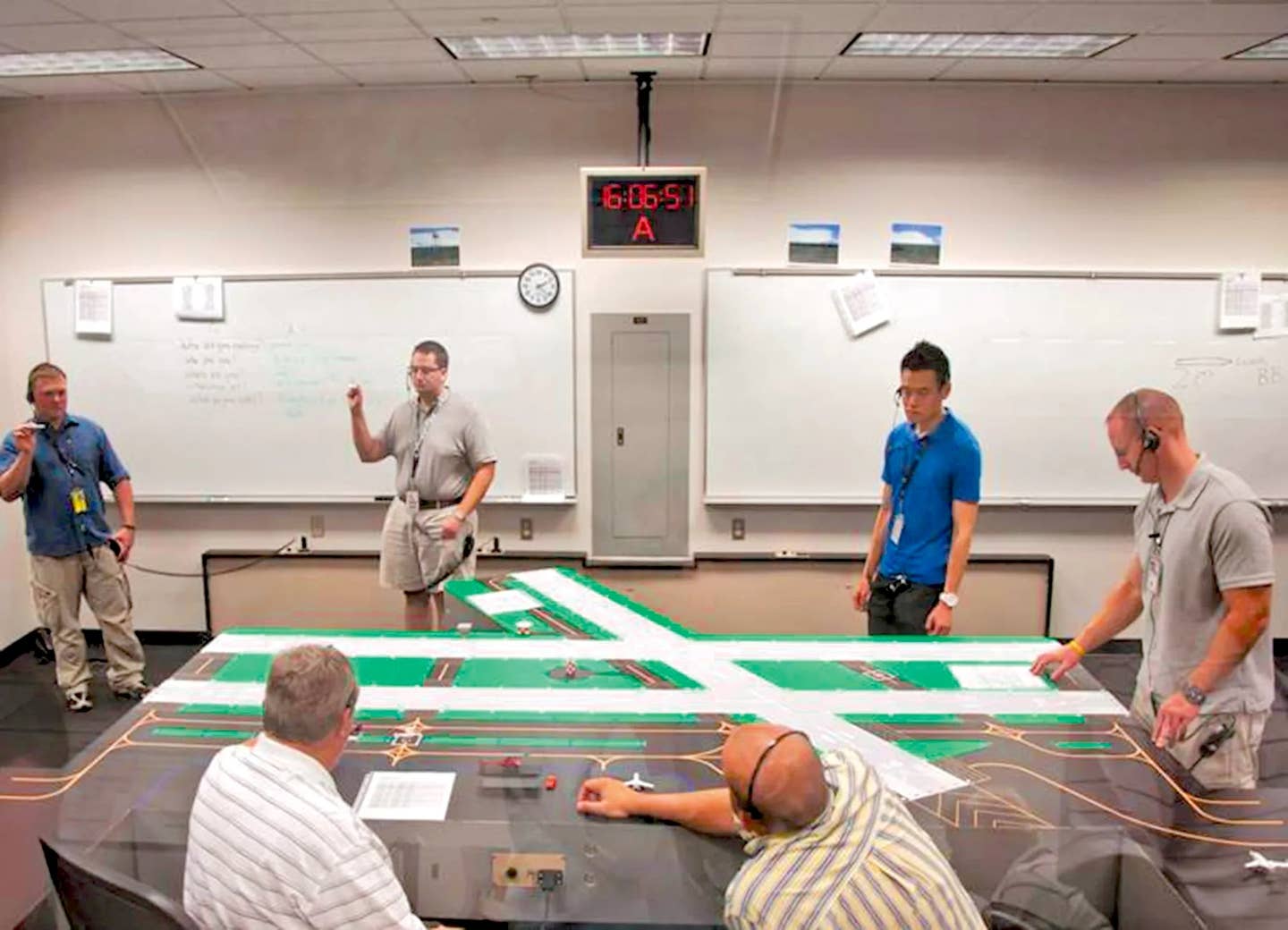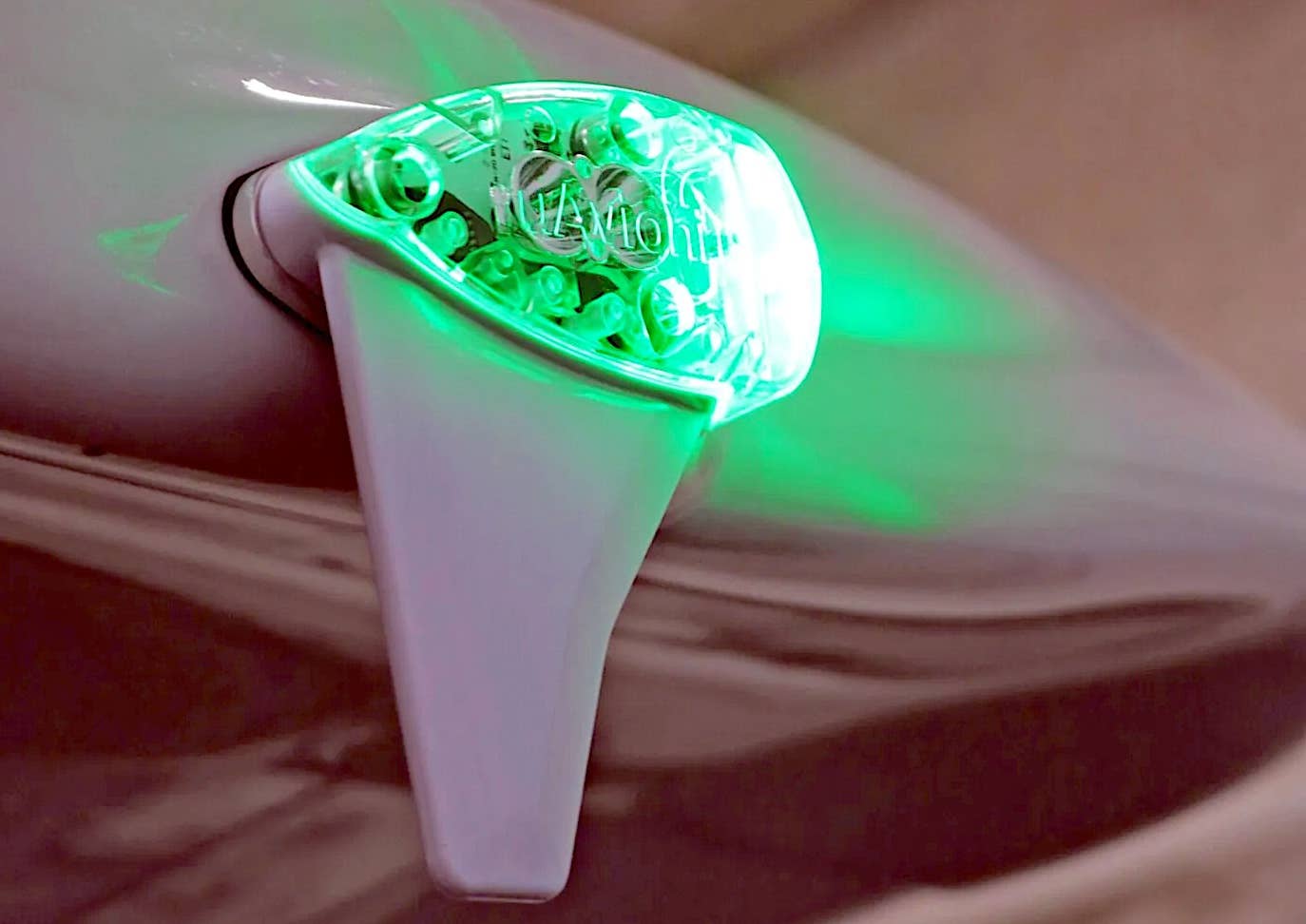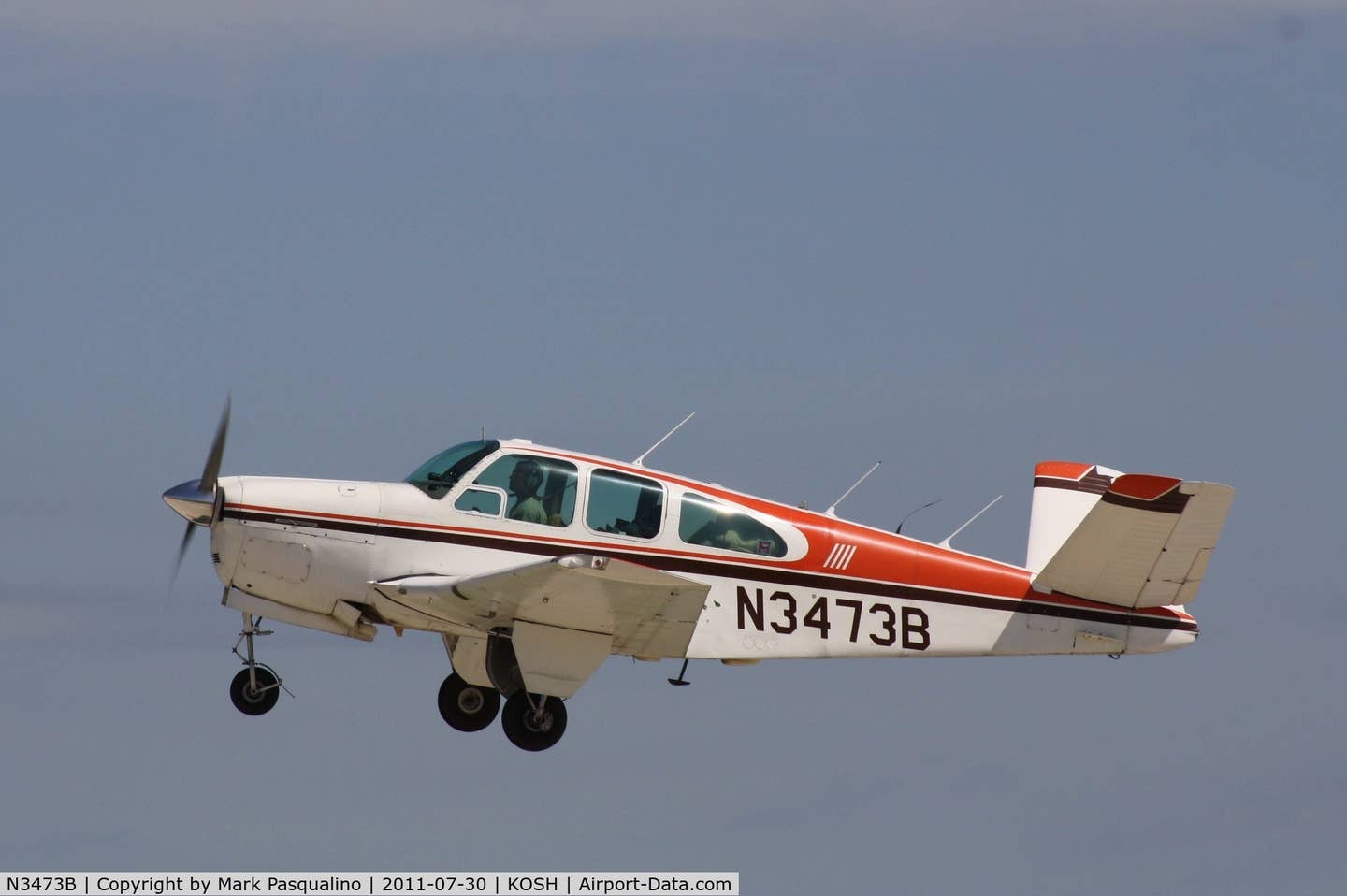Hiperbipe
Who else noticed not one…or two…or three…but four unusual, slab-sided, negative-staggered cabin biplanes outside the International Aerobatic Club (IAC) headquarters at AirVenture 2021? The well-known comedian Steven Wright once punned,…
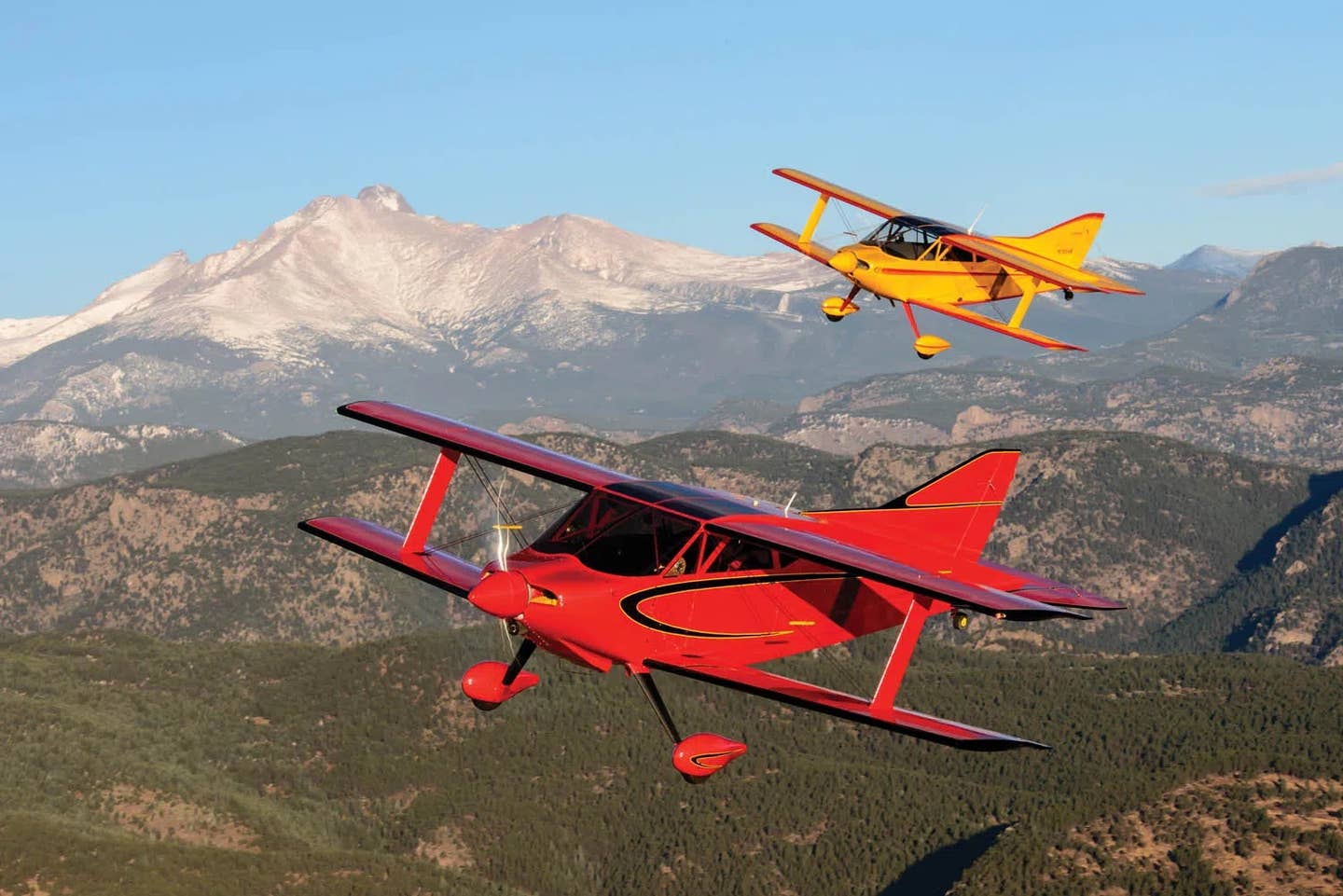
Who else noticed not one…or two…or three…but four unusual, slab-sided, negative-staggered cabin biplanes outside the International Aerobatic Club (IAC) headquarters at AirVenture 2021? The well-known comedian Steven Wright once punned, “You can’t have everything, where would you put it?” As pilots it seems we all want everything in an airplane, right? Ideally we would have an aircraft that is fast (but easy to fly), cost-efficient (with great performance), nimble and aerobatic (but stable enough for cross-country comfort), and of course it should allow for travel with a partner and luggage. The Hiperbipe is an often-overlooked homebuilt design that comes surprisingly close to delivering all of the above demands!
Inspired in part by the graceful lines and elegance of the Beech Staggerwing, Hobie Sorrell, along with his sons John, Mark and Tim, began designing a series of homebuilt biplanes in the late 1960s and early 1970s. Some of the early aircraft were too small or underpowered and weren’t exactly great performers. John Sorrell recalls flying an early “bathtub” design with his brother Mark when they were 11 and 13. He notes, “Its engine was too anemic for any of the larger adults to fly!” Can you imagine that happening today? “Have fun flying the bathtub, kids. Don’t bust any TFRs.”
Hobie’s first design was called the Guppy, followed by the Biggy Rat, which was powered by a converted Lycoming 125-hp GPU engine and controlled with flaperons. Learning from these designs and flying experiences, he pursued further development with a new set of goals. He wanted an aircraft capable of aerobatics, with an enclosed cabin, room for two and the ability to travel in an efficient manner and he wanted to be able to get into his one-way-in/one-way-out 900-foot strip. The evolution of these aircraft eventually led to the Hiperbipe SNS-6. The name and model number were derived as follows: Hiperbipe shortened from HIgh PERformance BIPlanE and SNS-6 from Sorrell Negative Stagger, Model Number Six. The first Hiperbipe design made its first flight in the early 1970s. John Sorrell, having just returned from active military duty in Vietnam, jumped right into the flight-testing phase.
The SNS-6 was proudly displayed at Oshkosh in 1973 and won Outstanding New Design. Eventual upgrades and some design modifications led to the second variant, the Hiperbipe SNS-7. This homebuilt generated a great deal of interest, and the Sorrell family created kits for builders to meet the demand.
There is an old saying that the B-24 was the crate the B-17 came in. Along those lines, one could make a similar statement that the Sorrell SNS-7 Hiperbipe came in the box in which a Pitts might arrive. Given its unusual lines, it is an aircraft that generates strong feelings among its viewers. The design speaks to some people and others, well, not so much. One thing is certain: The unique design creates an instant curiosity of onlookers anytime the plane lands. Longtime owner Guy Barrow wryly comments, “It’s not the same as everyone else’s airplane. People pop up from all over the airport to check it out when you land somewhere.” What usually follows is a series of questions, starting with “What the heck is that?”
Tubing, Wood And Fabric
The Hiperbipe frame is constructed with ¾-inch square 4130 steel tubing, tapering straight back to keep the fuselage at a constant width, which gives it its unusual profile. The Sorrells felt the use of square tubing made fitting the metal together easier than using round tubing. This framework also gives it a 42-inch-wide cabin, allowing side-by-side seating for two and room for up to 80 pounds of baggage. The wide, flat bottom of the fuselage creates an all-flying fuselage (or lifting body) and actually allows for smaller wings.
Each wing is all wood, with stressed plywood skins built around three spars. Originally, these were built with resorcinol (resorcinol-formaldehyde) glue. It’s a great adhesive that tolerates water and UV exposure, but it doesn’t fill in gaps like modern epoxy resins and it requires close-fitting joints. The twisting moment arm of the interplane struts caused cracking issues in the wings, which led to the Sorrells having to issue a bulletin to inspect resorcinol wings for evidence of delamination. Each wing has a full-span flaperon controlled by torque tubes that are routed through the leading edges to keep the control systems out of the wing panels. The entire airframe is then covered with fabric.
A delightful, unusual feature is that the upper cowl is continuous with the windshield, which is hinged at the top. That means when you lift the top cowl up, it brings the windshield with it, allowing access behind the instrument panel. Remember the last time you tried to work on your panel? After a few expletives and trying to contort yourself around and under everything in your way, I’m sure at some point you have found yourself thinking, “This would be so much easier if the windshield wasn’t here!” (OK, that might have been the second or third thought you had, but we’re keeping this article PG.) The mechanic in all of us can appreciate that the Hiperbipe design allows the maintainer to easily lift that pesky windscreen away, making access to a tight area so much easier!
The original had spring-steel Wittman-style gear legs, although the most recently built Hiperbipe incorporates titanium gear legs, which cause the nose to sit noticeably higher than the earlier models.
In-Flight Impressions
While there are a number of traits the Hiperbipe design sought to emphasize, most notably it was not only designed to be aerobatic—it was designed so that aerobatics could be flown easily and quite well. That’s a pretty tall order, but with that in mind we spoke with half a dozen Hiperbipe pilots, including John Sorrell, who has known the design from its inception, to get their impressions.
Universally, it seems pilots, builders and owners report that it is a straightforward, easy-to-fly airframe. The flat sides, while making a dramatic and unusual planform, separate the air into two planes rather than introducing the complex airflow of multiple planes. As the airflow comes over the top, it does tend to create some “dead air” over the lower portion of the rudder. Mike Mathews of North Carolina has a few interesting episodes on the YouTube Experimental Aviation Channel about his Hiperbipe, Mako, and he talks a bit more about the rudder. His impression is that the airflow accelerates down the top and sides of the fuselage, resulting in the aircraft’s sensitive rudder and elevator. We’ve never found any tuft test data demonstrating this airflow, but it would be fun to explore the aerodynamics of the overall design further. Suffice to say, according to Mike, on his plane it is difficult to get it into an upright spin (most likely because of the lifting body), and once it is forced into an upright spin, it takes a while to get out of it, which would support the rudder being partially out of the slipstream.
Conversely, from multiple pilots, the Hiperbipe is responsive and recovers without delay when in an inverted spin. A few later-built Hiperbipes have larger rudders than the originals, which seems to address this issue somewhat, and this characteristic is probably why the ’Bipe recovers faster from inverted spins rather than upright ones. Being inverted means the entire rudder and vertical fin are sticking down into the airflow, so there is more control surface in the game. This rudder airflow creates neutral stability, meaning wherever it is pointed, it flies. The downside is that you need to stay on the rudder consistently while flying it. Doug Eastman, who competes in cross-country races, found the addition of a two-axis autopilot invaluable to help offset these tendencies.
John Sorrell, Guy Barrow and Wayne Sargent all describe the ’Bipe as easy to fly and predictable in aerobatics. Wayne’s favorite maneuver is to do an outside loop, pull vertical into a tail slide and let it flop over to an inverted spin. This clearly isn’t a simple cross-country cruiser that can do an occasional “gentleman’s roll”! In fact, Rory Olsen of Michigan used it to compete in the IAC Sportsman and Intermediate categories. Part of its great roll rate is that the Hiperbipe has four flaperons, giving it lots of control input to roll. Adding a notch of flaps makes all the ailerons droop 27° while still retaining the up and down control-surface movement. Lewis Bjork has played a bit with engaging the flap aspect of the flaperons during aerobatics, which results in tighter loops and turns.
The lifting body component described earlier means the entire fuselage creates a symmetrical airfoil, and as it is rolled upside down the pilot doesn’t need to retrim the aircraft to keep it flying level. A few pilots have even found it to be faster in inverted level flight than right side up.
Everyone we asked who has had the opportunity to fly aerobatics in both a Pitts and a Hiperbipe commented that the Hiperbipe’s vertical penetration is surprisingly better than a Pitts S-2A, with the rest of the envelope being very similar between the two. So, do you need to be Bob Hoover to fly one? Not according to these pilots who’ve enjoyed their ’Bipes for decades. Guy compares it very similarly to a Pitts S-1S or S-2A, as well as a Christen Eagle and a Decathlon. Lewis describes it being more like a Pitts S-2B, but at that point we’re kinda getting into semantics. Either way, it’s a very capable aerobatic aircraft that can do loops from level flight. Guy does feel it is slightly heavier on the controls than a Pitts; however, he likes that it is not as twitchy and sensitive. According to Wayne, it will easily do everything an S-1A can do with the exception of a snap roll, the wide “flying-body” fuselage being the culprit there. It will still snap—it just takes some practice, which Mike Mathews demonstrates nicely in his videos. Given the nuances of the design, it flies predictably and can be rolled well, without the pilot even using their feet on the rudder. As it is, the design is stressed +6/-5 G’s, which is more than enough for average gentleman’s aerobatics.
An Airplane For Everything
The Sorrells wanted a cabin-class airplane that could do aerobatics, but also be a cruiser and have all-around utility. It sure sounds to us like it delivers well on all accounts it was designed for. With a comfortable 4-hour endurance at 160-mph cruise, one can cover some serious cross-country distances in comfort. The side-by-side seating is more enjoyable for some than tandem seating (typically the spouse or partner gets tired of watching the back of their pilot’s head), and it is relatively roomy for a smaller biplane. In fact, it’s as wide as a Cessna 180 cabin! The luggage capacity means that you and a passenger can bring more than a toothbrush while traveling and enjoy the trip with a few sets of clean clothes and toiletries. Fuel capacity is approximately 38 gallons, some of which is in a 12-gallon header tank utilized for aerobatics (or for some, like Doug Eastman, smoke oil).
Looking at the aircraft, one might think with its large flat sides that crosswind capability might be a challenge. Everyone we spoke with actually described it as having very good crosswind performance. Rounding out the design is its great STOL performance; it can easily get into a 1000-foot runway, or shorter with practice. Not many traveling aircraft can make that claim, even without the aerobatic forte.
When talking with folks about their airplanes, we always ask not only about the positive features and things they love, but also the negatives. What don’t they like or what would they change? Across the board, everyone we spoke with wouldn’t change much, if anything. More power is always desirable, of course, and everyone wants more horses under the cowl. The cabin can be noisy at times, so better soundproofing is a consideration when building and restoring. Some people aren’t enamored with the square fuselage and the unique cosmetic appearance.
Basically it’s a design you either love or hate without much middle room. Lewis loved the flat design and the large cabin doors, which make getting in and out of the aircraft much easier, as well as the ease in loading cargo. He also thought the stick setup was comfortable and natural. It felt like he was hopping into a Christen Eagle. Since the original design was generated, our general population, on average, has gotten larger and taller. A few extra inches wouldn’t be unappreciated, but it is pretty darn spacious already.
As previously mentioned, the most recent Hiperbipes have been built with slightly larger rudders, giving them more vertical fin in the slipstream and yaw authority, so some pilots may consider retrofitting their aircraft at some point. There has been some consideration of decreasing the wing size, depending more on the lifting body of the fuselage, but no one has tried a clipped wing ’Bipe…yet, anyway. Overall, these are rather small changes that are by no means a deal breaker with the overall design.
A few years ago John Sorrell and his friend Wayne Sargent completed the newest fledgling ’Bipe, incorporating numerous upgrades. Being the “highest-performing” Hiperbipe, it weighs 1212 pounds empty, flies at 144 knots at 24 square and holds 80 pounds of baggage. Adding electric trim, powering it with a stroked IO-360 Lycoming, building larger flaperons as well as tail feathers and adding servo tabs, they have ideally created the most robust ’Bipe yet! By all accounts, it’s an absolute delight to fly!
Thinking Outside The Loop
Here’s a historic footnote that some might find interesting: In July 1989, Joann Osterud broke the world record for outside loops in her modified Hiperbipe, affectionately named Supernova. Encouraged by the previous record holder, Dorothy Stenzel, who set the record of 62 outside loops in 1931, Joann performed 208 (yes, 208!) consecutive outside loops. This eclipsed Stenzel’s record, as well as the unofficial record set by Hal McClain of 180. Why 208? Well, Joann was going for 200, but one of her favorite songs was playing through her headset, the Bernie Leadon/Gene Clark tune “Train Leaves Here This Morning,” performed by The Eagles, and she didn’t want to stop until it was finished.
Speaking of history, Sorrell Aviation was founded in 1958 and produced between 50–100 Hiperbipe kits, as well as parts for the Pitts S-1-11B (Super Stinker), before it ultimately closed its doors in the 1980s. Nevertheless, enthusiasts continue to keep the design flying, and in 2002 Thunderbird Aviation in Michigan acquired the rights and tooling for the SNS-8 Hiperlight and later for the SNS-7 in 2013.
You might not be able to have absolutely everything in an aircraft, but the Hiperbipe gets pretty close. The best description we’ve heard to describe it is that it is the “Swiss Army knife of airplanes,” with a tool for every job or rather the capability for almost every mission. To learn more about this unusual design, visit ThunderbirdAviationMI.com.
SNS-7 Hiperbipe
Kit price: $52,900
(Includes pre-welded fuselage and empennage, all covering materials, cowling, windshield and 80% completed wings.)
Estimated completed price: $65k–$125k
Estimated build time: 500–800 hr
Number flying (at press time): 24 (Estimated)
Powerplant: Lycoming IO-360
Propeller: Constant-speed
Airframe
Wingspan: 22 ft 10 in
Wing loading: 12.74 lb/sq ft
Standard fuel capacity: 38 gal
Maximum gross weight: 1911 lb
Empty weight: 1236 lb
Typical useful load: 675 lb
Full-fuel payload: 447 lb
Seating capacity: 2
Cabin width: 42 in
Baggage capacity: 80 lb
Performance
Cruise speed: 160 mph
Maximum rate of climb: 1500 fpm
Stall speed (clean): 49 mph
Takeoff distance: 400 ft
Landing distance: 595 ft
Specifications and pricing provided by the manufacturer.
This article originally appeared in the March 2023 issue of KITPLANES.
For more great content like this, subscribe to KITPLANES!

